How Professional Roof Repair Restores Your Home After Florida Storm Damage
When Florida’s powerful storms hit, professional roof repair is the fastest and safest way to restore your home and prevent expensive problems in the future. Heavy rains, strong winds, and falling trees can cause extensive storm damage – compromising shingles, flashing, metal or tile, and even leading to leaks or structural issues. Expert roof repair specialists quickly assess the damage, make urgent fixes to keep water out, and replace or restore your roofing materials to their proper condition. This not only protects your property and belongings but also preserves your home’s value and curb appeal. Whether your roof suffered minor shingle losses or serious tree damage requiring partial or full roof replacement, a qualified roofing team can get your home back to normal, fast.
Table of Contents
- Understanding Storm Damage in Florida
- How Roof Repair Restores Safety and Value
- Common Types of Roof Damage After a Storm
- Repair vs. Replacement: Making the Right Choice
- The Importance of Acting Quickly
- Materials Matter: Shingles, Metal, and Tile Roof Repair
- Steps Professionals Take After Storm Damage
- FAQs
Understanding Storm Damage in Florida
Florida’s weather is unique, with sunny days often interrupted by violent thunderstorms, hurricanes, or tropical storms. Homeowners face challenges such as:
- High winds that rip off shingles and loosen flashing
- Torrential rain that causes leaks and water pooling
- Tree damage from falling branches or uprooted trees
- Hail that dents metal and cracks roof surfaces
- Debris buildup that blocks drainage and accelerates decay
Timely, professional roof repair is crucial after a storm to avoid more expensive damage inside your home.
How Roof Repair Restores Safety and Value
Professional roof repair goes beyond stopping a leak or patching up a missing shingle. Here’s how it revives your property:
- Prevents Further Damage: Quick repairs keep water and moisture out, protecting your home’s structure, insulation, and interiors.
- Protects Your Investment: Fast, high-quality repairs preserve your home’s market value and curb appeal.
- Restores Roof Integrity: Expert fixes replace damaged materials and reinforce weak points, helping prevent future storm damage.
- Ensures Safety: Broken shingles, loose tiles, or partial collapses are immediate safety hazards – professionals remedy these before injuries or bigger problems occur.
- Reduces Insurance Hassles: Step-by-step documentation and repairs by certified experts make insurance claims smoother and likelier to succeed.
Common Types of Roof Damage After a Storm
- Missing or Lifted Shingles
High winds often peel shingles away, leaving underlayment exposed to water. These gaps require prompt roof repair to prevent leaks. - Metal Dents and Scratches
Hail, windborne debris, and falling branches can dent or scratch metal, which reduces both performance and appearance. - Cracked or Displaced Tiles
Clay or concrete tiles can crack or become misaligned, which lets water seep underneath. - Tree Damage
Falling limbs or entire trees can puncture a roof, smash support beams, and demand partial or full roof replacement. - Flashing and Gutter Damage
Storms can dislodge flashing around chimneys or vents and clog or tear gutters, causing water to enter areas it shouldn’t.
Repair vs. Replacement: Making the Right Choice
Not all storm damage requires a full roof replacement – sometimes, professional roof repair is all you need. Knowing the difference saves time and money.
- Repair is ideal for:
- Small areas of missing shingles or minor leaks
- Isolated damage from tree limbs
- Dents or cracks in specific tiles or metal panels
- Replacement may be necessary if:
- Large sections of roof are missing or severely damaged
- Structure beneath the roof is compromised
- Roofing material is nearing the end of its lifespan
A trustworthy roofing contractor will always recommend the most cost-effective solution for your situation.
The Importance of Acting Quickly
Delaying roof repair after a storm can cause minor issues to turn into major hazards. Any roof exposed to Florida storms could see accelerated:
- Mold growth inside walls or attics
- Rotting wood and ruined insulation
- Structural weakening
- Increased energy bills due to loss of roof integrity
Fast, professional help means fewer headaches and less disruption to your daily life.
Materials Matter: Shingles, Metal, and Tile Roof Repair
Florida homes use several roofing materials, and each requires specific techniques during repair:
- Shingles: Asphalt shingles are common and affordable, but need careful matching and proper nailing patterns to withstand future storms.
- Metal: Metal roofs can be dented or scratched, but often can be reshaped or have panels replaced without a full roof replacement.
- Clay or Concrete Tiles: Fragile but long-lasting, these need precise handling. Replacing a few tiles is possible, provided there’s no underlying water damage.
Professional roofers inspect all damage and recommend repairs tailored to your home’s specific roof type.
Steps Professionals Take After Storm Damage
A reputable roofing company follows a systematic approach:
- Inspection: A licensed expert checks all parts of the roof – including underlayment, flashing, and attic – for signs of unseen damage.
- Documentation: Photos and reports detail the storm damage for insurance and repair planning.
- Temporary Protection: Tarping or sealing to prevent immediate leaks while planning permanent repairs.
- Repair Planning: Selecting appropriate materials (matching shingle color, correct tile type, etc.).
- Repairs or Replacement: Restoration or installation of new shingles, metal, or tiles as needed.
- Final Check: Ensuring every element is properly sealed and water-tight before cleanup.
FAQs
- How soon after a storm should I get my roof inspected?
It’s best to have your roof inspected as soon as it’s safe to do so—typically within 24–48 hours after the storm. Quick inspections spot damage before it gets worse. - What are signs of storm damage I can look for myself?
From the ground, look for missing shingles, downed branches, dented metal, piles of debris, or water spots on your ceilings. Any of these can mean roof repairs are needed. - Will my insurance cover storm damage roof repair?
Most homeowners’ policies do cover storm damage, but you’ll need detailed documentation and sometimes an inspection report from a licensed pro. - Does my entire roof need to be replaced, or can I just repair the damaged parts?
Smaller areas with local damage (like missing shingles or minor tree damage) can usually be repaired. Widespread or structural damage may require roof replacement. - How long do professional repairs take?
Most minor repairs take a day or two, while larger repairs or replacements might take a week or more—weather and material availability can affect timing.
Call KAM Roofing Services for Fast, Reliable Storm Damage Roof Repairs
When a Florida storm damages your roof, quick action can mean the difference between a simple repair and a major rebuild. KAM Roofing Services is your trusted local expert for storm damage inspections, insurance documentation, and high-quality roof repairs or replacements. Our licensed team responds quickly, restores your home with precision, and helps you protect its long-term value.


